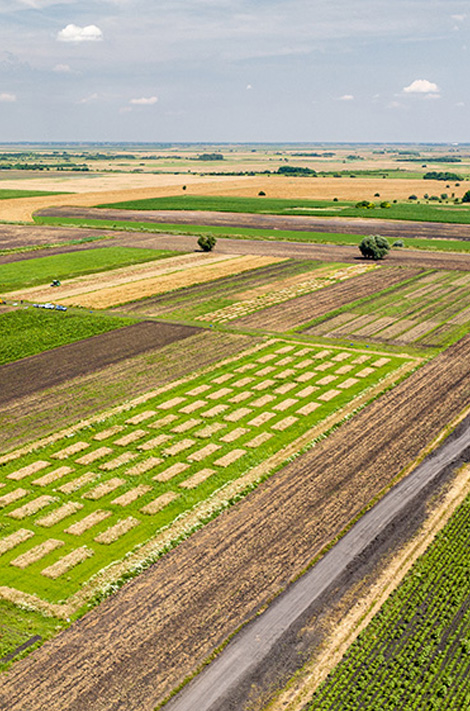
Integrated Disease Management
With prevention, monitoring, and control of pests and diseases, we minimize the impact on human health, beneficial organisms, and the environment.
How effective are biopesticides?
With so many different biopesticides on the market, how can a farmer tell which one works best? We’re testing the effectiveness of various biopesticides and measuring it against different diseases and insects, as well as how they affect grain health. First results are expected by the end of 2024.

Do inoculants for chickpea seeds work?
We’re running a trial of inoculation of chickpea seeds with specific and non-specific rhizosphere bacteria to achieve an induced systemic resistance to pests and diseases. In turn, this could lead to higher grain and protein yields, better resistance of crops to diseases and pests, as well as higher levels of nitrogen for the next crop. First results are expected by the end of 2024.

Prediction of the most common diseases
What if farmers could predict most common diseases in their crops and prevent big outbreaks and crop damage?
Quickly detecting plant growth and development
With weather patterns increasingly unpredictable, Growth Degree Days (GDD) of crops also fall out of usual patterns. Our solution helps monitor the phenophases of the plants, analyze crop progress, predict the occurrence of diseases, and evaluate optimal harvest time.

Collecting data to understand and prevent threats
If we understand patterns in the appearance of specific diseases, we have a better chance to quickly identify and prevent them. Until now, we have been systematically collecting information on diseases such as Oat powdery mildew, Fusarium head blight of wheat, Downy mildew of Pea, and Ascochyta blight of chickpea among others.

Simplifying sustainable plant protection
We understand that certain operations can be tedious for farmers. And so, our simple solutions include:
- A calculator to swiftly determine the required doses of biopesticide preparations and water per unit of treated area.
- An overview list of allowed substances in organic production as required by various certifications.
Models that quickly account for Helicoverpa caterpillars in chickpeas, and nodulation ratings calculator on legumes, are also among our research focus.

As soon as they are validated, we will incorporate these solutions into our Farming Software, and share this knowledge for free.
Subscribe to our newsletter for the latest news on plant protection.









Subscribe to our newsletter for latest field trials and sustainable farming practices.
By submitting your email, you consent to subscribe to our e-newsletter to receive the latest LoginEKO updates. You can withdraw your consent at any time, more info here.



